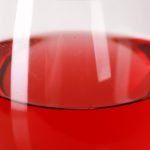Homemade Cranberry Wine
Cranberries make a fantastic red wine. The hardest part about making cranberry wine is waiting - but it's worth it!
Servings: 1 Gallon
Calories: 7053kcal
Equipment
- Large pot
- 2 gallon fermenter bucket and lid
- 1 - 2 1 gallon glass carboys
- 1 air lock and stopper
- Siphon, siphon tubing.
Ingredients
- 1 gallon Spring Water
- 3 lbs Granulated Sugar
- 2 lbs Fresh Cranberries
- 1 lb golden raisins
- ½ teaspoon Acid Blend
- ½ teaspoon Pectic Enzyme
- 1 teaspoon Yeast Nutrient
- 1 packet Red Star “Montrachet” yeast
- Potassium sorbate or other wine stabilizer
Instructions
- Chop cranberries, set aside
- In large stock pot – combine water and sugar. Heat to boiling, stirring until sugar is dissolved.
- Add chopped cranberries, stir and continue to cook for 5 minutes.
- Add acid blend, pectic enzyme, and yeast nutrient. Stir well, turn off heat. Cover with a lid, allow to cool to room temperature – overnight.
- Place raisins and yeast in a freshly sanitized 2 gallon fermenting bucket.
- Carefully pour the cranberries and water into the fermenting bucket.
- Using sanitized equipment – take a gravity reading. Keep track of the number! (This is an optional step, but will allow you to calculate your final ABV %)
- Cover with sanitized lid and air lock. Within 48 hours, you should notice fermentation activity – bubbles in the airlock, carbonation and /or swirling in the wine must. This means you’re good to go!
- Let sit for about a week, stirring (sanitized paddle!) every couple of days or so.
- After a week or so, use your sanitized siphon setup to rack the must into a freshly sanitized 1 gallon carboy.
- Put the carboy somewhere cool (not cold!), and leave it alone for 2 months or so.
- Using sanitized equipment, rack the wine off the sediment, into a clean, freshly sanitized 1 gallon carboy. Cap with sanitized airlock, leave it alone for another 2-3 months.
- Rack one more time, leave it for another 3 months or so.
- When your wine has been racked a few times and shows NO more fermenting activity for a month or so (no bubbles in the airlock, no more sediment being produced, you can move on to bottling, and back sweetening, if needed.
- Follow the instructions on your selected type of wine stabilizer to stop fermentation. For potassium sorbate, this needs to be done 2-3 days before bottling.
- Using sanitized equipment, take a final gravity reading, then rack the wine into clean, sanitized bottles. Cork.Age for at least a few months before drinking.
Notes
I’m not going to lie – the wine you bottle is going to be a little harsh. Drinkable, but definitely unrefined. Put the bottles into the cases they came in and forget about them for at least a few months– you’ll have a much tastier wine at the end of the wait!
Our wine was smooth and tasty to drink 1 year to the date we made it, definitely fit to serve with the Thanksgiving dinner!
IMPORTANT:
Software generates nutritional information based on the ingredients as they start, and is unable to account for the sugars consumed in the fermentation process. As such, the calories, sugars, and carbs are shown WAY higher than reality.
Additionally, the listed value is for the entire recipe, NOT per serving.
Nutrition
Calories: 7053kcal | Carbohydrates: 1832g | Protein: 19g | Fat: 3g | Saturated Fat: 1g | Sodium: 275mg | Potassium: 4155mg | Fiber: 60g | Sugar: 1663g | Vitamin A: 544IU | Vitamin C: 135mg | Calcium: 440mg | Iron: 11mg
